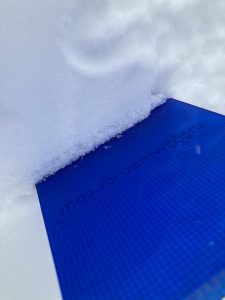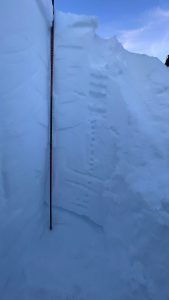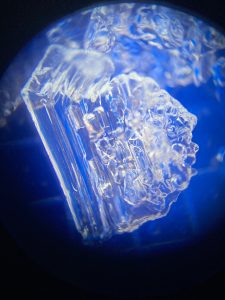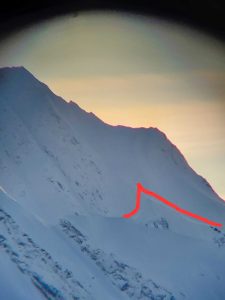Haines Avalanche Center
Above 2,500ftHigh
1,500 to 2,500ftHigh
Below 1,500ftConsiderable
The Avy Rose shows the forecasted danger by elevation and aspect. It adds more detail about where you are likely to find the dangers mentioned in the forecast. The inner circle shows upper elevations (mountain top), the second circle is middle elevations, and the outer circle represents lower elevations. Think of the Rose as a birds-eye view of a mountain, looking down from above. The rose allows our forecasters to visually show you which parts of the mountain they are most concerned about.
Degrees of Avalanche Danger
Avalanche Problems
Problem 1
The Bottom Line: Dangerous avalanche conditions exist due to heavy precipitation and strong south winds that have loaded persistent weak layers. Some of these slides could be very large, step down to the ground, and run full path to hit lower runout zones in the valley bottoms. Avoid all avalanche terrain and runout zones today especially N-NW-W aspects. If you venture out, stick to forested areas and be careful to avoid any steep openings or gullies/terrain traps. Keep your slope angle below 30 degrees without any steeper slopes above or adjacent to you.

We have two buried surface hoar layers in wind protected areas, about 1-3ft deep. In addition, we have three lingering facet layers about 3-6ft deep, and at the ground (See Deep Slab problem below). Anywhere surface hoar is not present will likely have buried Near Surface Facets. There is still a lot of stress being stored in the snowpack and poor structure. Don’t be the trigger that unleashes this stored energy. Think about the connectedness of a hard slab, from where you are standing. If something is triggered on a steep slope or in a thin area nearby, does that slab connect to you, or above you? What about the rest of your group?
Never expose more than one person at a time to slopes 30-degrees and steeper, and don’t enter avalanche terrain without a plan for how to manage an avalanche that could break far wider and larger than you expect. Give yourself an extra margin of safety.
Surface Hoar Layers Beneath the New Snow:
- A new Surface Hoar layer from January 10th (pictured to the right) is now buried beneath this week’s new snow. We expect this new/old snow interface to be active during this storm cycle.
- The Dec 31 surface hoar layer is present in the Transitional and Pass zones, about 3ft deep. This layer has been active in pits, and caused some natural avalanches
- Buried SH layers are tricky — they’re hard to find, and may only exist in wind-protected areas. But anywhere they are present you should be highly suspicious of that slope.
- It would be best to avoid wind-protected pockets that may be harboring this dangerous weak layer. Make continual assessments on test slopes and with stability tests.
Photo of buried surface hoar 1/6 at Haines Pass near treeline at 2,500′ on S-aspect with ECTP 23 & 24 down 60cm that showed propagation potential. Above photo Surface Hoar at the Pass 1/10.

Likelihood:
- Almost Certain
- Very Likely
- Likely
- Possible
- Unlikely
Size:
- Historic
- Very Large
- Large
- Small
Trend
- Increasing
- Steady
- Decreasing
Problem 2
We should remain aware that very deep and wide destructive avalanches need to be considered and planned for accordingly. Pay attention to run-out paths and leave wide margins of safety for larger than expected slides. Terrain management is critical. An avalanche in the upper snowpack or cornice failures, within the new snow load could step down and lead to a massive avalanche.
Old Melt Layers and Crusts:
- A buried persistent weak layer about 6 feet deep (The “Big Warmup” Layer, Formed Nov 17th) is still a concern.
- It is a thick refrozen crust with weak faceted snow above. This is an unusual and unpredictable weak layer because it formed during a thaw event and then re-froze while cold temperatures faceted the stout crystals.
- A wide safety margin is necessary. This setup could produce avalanches that break wider than expected, and are most likely to be triggered from shallow trigger points like rocks or small trees. You could ride the same slope numerous times until that right spot produces a large destructive slide.
Photos of the “Big Warmup” facet layer in the Transitional Zone at 2500ft on 1/2 with test results ECTP18 that demonstrated propagation potential on this layer. And a photo from Old Faithful on 1/12 of a 5″ thick layer of facets down 170cm.
Observations in all zones throughout December and now into January have found moderate strength and quick propagation on failures within the “Big Warmup” crust/facet layer. We know it to exist at all elevations above 1000ft — even up to the highest summits. We expect this layer (and other midpack crust-facet layers) to be an ongoing issue going forward.
Depth Hoar at the Ground (Above 3,000′):
- October snow followed by long cold snaps created depth hoar at the ground in most areas. These angular snow grains are well developed into a weak layer that behaves like brittle glass.
- As the snow gets deeper, the load over this layer increases, and it could collapse. You are most likely to human-trigger this layer from shallow spots around rocks, or trees, or have a surface avalanche step down to the ground on this layer. Any slides that break to the ground are likely to be deadly.
Photos shows 6-9mm advanced depth hoar at the ground down 180cm with ECTP 25 down 80cm on facets below a crust in the Haines Pass Zone at 4,000ft on a NE-aspect.
Likelihood:
- Almost Certain
- Very Likely
- Likely
- Possible
- Unlikely
Size:
- Historic
- Very Large
- Large
- Small
Trend
- Increasing
- Steady
- Decreasing
Avalanche Activity
Over the last 2 weeks:
In the Haines Pass, D2 N aspect ~5000ft natural slide, cornice fell and triggered slide- looked recent, failed mid second week of January. D1 W aspect ~5500ft, piece of cornice fell and triggered small slide/ sluff, potentially remotely triggered by a group.
A few natural deep slabs ran during a short period of warm weather in the Lutak zone. These isolated slides were D3+ sized, running 3-9ft deep and stepped down to the ground in spots. The largest ran on an unsupported slope above cliffs. Takhin ridge (E aspect around 3000ft) had several D2-D3 natural avalanches observed that ran about 2ft deep with very wide and complete propagation. This was in a protected basin where Surface Hoar likely grew before the last storm.
Weather
Forecast:
Overnight freezing levels spiked above 2,500′ with increased precipitation and strong south winds. Late Saturday mornings temperatures should ease bringing freezing levels below 1,000′ by afternoon. Light precipitation and moderate winds from the SE are expected.
Recent Weather Summary:
- Heavy snow and rising freezing levels came in Jan 17 & Jan 19
- Surface Hoar and Near Surface Facet growth Jan 8-10
- A strong front brought 24-30″ of snow above 2000ft on Jan 2nd.
- There was widespread Surface Hoar growth on Dec 31st.
- Dec 23-26 brought 10-18″ of new snow and a sharp rise in temperatures from -10F to 30F along with variable winds
- Dec 16-23 brought strong NW winds and arctic cold temperatures
- Dec 15 brought warmth/light rain up to 2600ft
- Complete Season Histories: Transitional Zone Lutak Zone
| Snow Depth | Last 24-hr Snow/SWE | Last 3-days Snow/SWE | Today’s Freezing Level | Today’s Winds | Next 24-hr Snow/SWE | |
| Mount Ripinsky @ 2,500′ | 96″ | 6″ / 1.20″ | 18″ / 1.50″ | 800′ | mod, SE | 8″ / 0.70″ |
| Flower Mountain @ 2,500′ | 59″ | 5″ / 0.80″ | 9″ / 0.80″ | 500′ | mod, SE | 6″ / 0.50″ |
| Chilkat Pass @ 3,100ft | 42″ | 2″ / 0.40″ | 8″ / 0.70″ | 500′ | mod, SE | 4″ / 0.30″ |
Additional Information
WEAR A HELMET! Be careful of rocks and hidden hazards. Be prepared for crevasses when on a glacier.
Are your riding companions trained and practiced in avalanche rescue? Everyone in your group needs to have a beacon, shovel, and probe, and know how to use them. Our mountains have very limited cell coverage, carry an emergency communication device and enough gear to spend the night.
Alerts
The Haines Pass is closed at the border due to the Alcan 200! Avalanche danger is elevated at upper elevations due to warm temperatures, recent snowfall, and strong south winds. Avoid all avalanche terrain and lower runout zones. Click the +Full Forecast link below for each zone to read more. If you see any recent natural avalanche activity, or debris please submit an observation.






